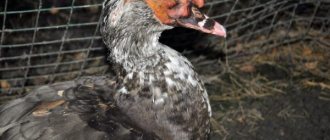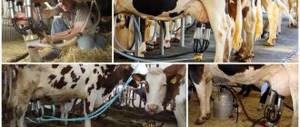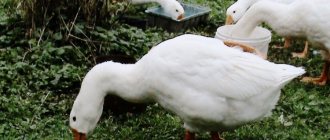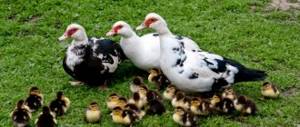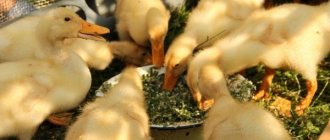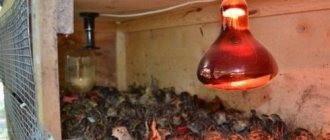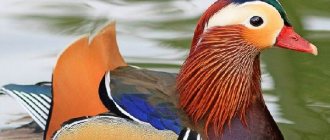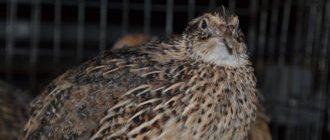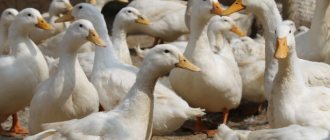Poultry farming » Turkeys
0
1814
Article rating
Kira Stoletova
Raising turkeys for meat at home is a profitable business. Today, when stores are full of products of dubious quality, many people strive to breed animals themselves to obtain natural products. Turkey meat is highly valued for its low calorie content and excellent taste.
The principle of raising turkeys for meat
Features of choosing the right breed
Among poultry, breeders most often choose turkeys to raise for meat. This category of birds has many advantages over other types of living creatures:
- accelerated weight gain;
- easy care;
- high survival rate of turkey poults;
- low feed costs;
- dietary natural meat.
The main advantage is the rapid gain of muscle mass. Male meat-oriented representatives can reach 30 kg, females 15. Turkey meat is often prescribed to people with all kinds of diseases of systems and organs. Meat products contain many vitamins and beneficial amino acids. Meat breeds gain optimal weight within 2-3 months. Among the most popular representatives of meat breeds:
- big6;
- white broad-chested;
- baht8.
Only breeding individuals give good returns. In 2-3 months of proper nutrition and care, birds gain 20-30 kg. To make the most of the breeds’ production data, it is necessary to create optimal living conditions for birds, close to natural ones, and also provide them with the right, balanced food.
Which turkeys are best to raise for meat?
Now there is a large selection of breeds and crosses of turkeys for meat production, and owners of private farms can choose from the following:
- broad-chested white. Within this breed there are three lines of productivity types - light (the male weighs up to 9 kg, and the female gains weight up to 6 kg), medium (17 kg and 7 kg, respectively), heavy (25 kg and 10 kg). Meat yield is 68–70%;
- bronze broad-chested. The average live weight of males is 16 kg, and that of females is 9 kg. The meat yield from a gutted carcass is up to 66%;
- Canadian broad breasted. At 20–23 weeks, turkeys weigh 13–14 kg, and female turkeys gain weight up to 8 kg;
- Moscow bronze. Adult males reach 15–16 kg, and females - 7–9 kg;
- BIG6. Turkeys of this productive cross gain weight of 22–25 kg, and turkeys reach 11 kg. The yield of clean meat from these broilers is high and amounts to approximately 80–85%;
- hybrid converter. Males gain weight 20–22 kg, and females weigh 10–12 kg. The meat yield from one carcass reaches 80–85%;
- grade maker. At five months, the average weight of males is about 19 kg, and females weigh almost 11 kg at 4.5 months;
- BYuT8. Males weigh up to 27 kg, females reach 10 kg. Meat yield is about 83%.
The meat yield depends on the intensity of feeding and for meat-producing breeds it usually ranges between 60–70%, and for cross-breeds – 80–85%.
Content Features
Raising turkeys can be a great way to make money. Many novice breeders build their business on breeding turkeys of meat breeds. If you have a country house, then there will be no problems with organizing a poultry house. When keeping turkeys, it is important to take into account that the bird does not like being close to other birds and does not tolerate heat, drafts, dampness and extreme frosts.
Turkey barns have special requirements. The room should be quite large in area, because birds have a large build and should have enough space at their disposal to move freely. An optimal microclimate must be constantly maintained in the turkey poultry house, which is achieved by using proper supply and exhaust ventilation equipment. If even one requirement is not taken into account, the productivity of the birds will decrease significantly. Birds are very susceptible to temperature changes and may even die if the situation is not corrected in time.
It is very important to maintain the density of birds when breeding. Large turkeys lead quite an active lifestyle, so they should have plenty of space at their disposal. The planting density will depend entirely on the developmental characteristics of the breed selected by the breeder.
For rapid growth and optimal development, turkeys need sufficient free range during the warm season. To do this, next to the poultry house, you should fence off the area and build a hole from the barn door so that the birds can freely enter and exit. During the cold season, walking is strictly prohibited, because the risk of colds as a result of hypothermia is very high. Another important stage in the successful breeding of meat turkeys is timely vaccination, which will help avoid mass deaths of birds even during the quarantine period.
When breeding turkeys for meat, you must first take into account all the features of the chosen breed. There is a special fattening system, which implies some general provisions. However, it is impossible to achieve maximum results without studying the breed characteristics.
Requirements for maintenance and care at home
Turkeys are considered unpretentious birds. But in the feeding and maintenance of meat breeds there are features associated with the large size and weight of the birds.
Room and walk
Meat turkeys are kept in two ways:
- on the range - birds spend the day on pasture, which allows you to save on feed and get high-quality meat;
- in a cage - provides a short daily walk, requires preparing plant food;
- on the floor - turkeys move freely around the house.
When raising birds year-round, floor and pasture rearing is combined. In winter, meat turkeys are kept in a warm room, and in summer they are released to graze.
Tips for beginners on setting up a poultry house from scratch:
- the optimal temperature for turkeys is +17-22 degrees;
- permissible air humidity is 60 percent. To avoid dampness, the floor of the poultry house is raised 40 centimeters above the ground, and the cracks are sealed;
- You need to maintain fresh air in the room, open a window for ventilation or install a hood. In a stuffy room, ammonia fumes accumulate, poisoning birds;
- the floor is covered with peat, straw or sawdust. In summer, add a thin layer of fine sand or gravel;
- for dry and wet food, hang separate round feeders at the level of the turkey’s head;
- To ensure that the litter remains dry, cup or nipple drinkers are placed - the birds do not spill the water and drink as much as they need;
- for light and medium-weight breeds, perches are installed - horizontal wooden rounded planks are fixed between two walls. Containers are placed under the perches to collect droppings, which are used as fertilizer, as well as dirty litter;
- To hatch chicks, tall cardboard boxes with sawdust on the bottom are placed in the corners - nests for hens.
The cages are placed in 2-3 tiers to make it convenient to clean them and get the birds out. Each cage is equipped with an individual feeder and drinker, which are fixed to the door. For walking, a pen is separated next to the poultry house and fenced with a metal mesh 2.5 meters high.
Expert opinion
Zarechny Maxim Valerievich
Agronomist with 12 years of experience. Our best country expert.
Ask a Question
The area of the pen and premises is calculated based on the large size of the fattened birds - no more than two per square meter. In the pen and indoors, turkeys are given basins with ash for bathing.
Climate
Overheating is detrimental to meat turkeys. Therefore, the room temperature cannot be increased above 30 degrees. You need to make a canopy over the paddock and arrange a walking area in the shade of trees. At low temperatures, bird weight gain decreases and feed consumption increases. If the turkey poults are huddled together in a dense flock, it means that the room requires additional heating.
Wintering of birds
Turkeys are kept only in a heated room. Frost and dampness are destructive even for breeds with high immunity.
In winter, the litter is laid in a 30-centimeter layer, loosened every day and changed at least once every 10 days. The daylight hours of birds should last 14 hours, so lamps should be installed in the poultry house for additional lighting in winter.
In sunny weather and light frost, turkeys are released for a walk around the paddock, after removing the snow.
How to fatten?
Birds can be fed at any age
Raising turkey poults at home requires special care at first, while the immune system is developing. Birds of this species grow very quickly, so in order to achieve certain quality indicators of meat products, you need to know what to feed the bird so that it quickly forms muscle mass and does not deposit fat. You can start fattening birds at any age, but it should be taken into account that the food for turkey poults and adults will differ significantly. There are several fattening methods:
- forced;
- self-pecking
The first method involves feeding birds with specially prepared compounds. To make the mixture, take 20% corn flour and barley, then add 15% bran and wheat, 5% yeast and 1% table salt. All ingredients are mixed and moistened in water. After this, they are placed independently into the bird’s esophagus.
This feeding method allows you to fatten the bird to the required body weight in just a couple of weeks. In the first days, feeding manipulations are carried out twice, then the number of feedings is gradually increased. When pushing food, you need to carefully fix the bird with one hand so that it does not twitch.
The second method involves free-range fattening. feeding is carried out in the fields after the harvest of melons and melons. In addition to self-feeding, birds are given standard food 2-3 times. The advantage of the method is that it is cost-effective and accelerates weight gain in less than 14 days.
Methods of content
Lovage - cultivation and care
At home, there are several ways to raise turkey poults and methods of keeping birds. Therefore, the farmer can choose the most suitable one for himself.
What you need to consider when choosing a content method:
- Planned number of individuals;
- Requirements for caring for turkeys;
- Breed of turkey poults;
- The location chosen for the poultry house.
For breeding meat breeds (Big broiler), bronze turkey, convector or crosses, floor-type housing is recommended. If rabbits are bred on an industrial scale, then the cellular technique can be used.
Brooders and cages
When transferring newly hatched chicks, brooders are used. These are cells that have an automatic system for regulating temperature, air humidity and lighting. In fact, a brooder can replace a hen if the parameters are set correctly.
Brooders for turkey poults
On a note. During the first weeks in cages or brooders, it is advisable for the floor to be lined with film or thick paper. This way the chicks will not damage the bedding.
Cages can be ordered from specialty stores or made yourself to save money. Based on the type of construction, they are divided into: single-tier and multi-tier. If you plan to breed a large number of individuals, then multi-tier cages are used. Young animals are placed on the upper floors, and large adult individuals live on the lower floor.
Unlimited walking
The young animals are ready for walking in warm weather at the age of 2 months. Before being released into open pens, turkey poults should be gradually introduced to the diet with green grass.
The walking area will need to be fenced with a mesh fence. The place should be slightly elevated, dry, without drafts. It is desirable that thick grass, clover, alfalfa, and peas grow in this area.
Portable wooden houses and drinking bowls should be installed in the walking area.
After summer, adult turkeys are prepared for the transition to an “autumn” diet. Beet tops, cabbage, carrot, and pumpkin leaves are added to the food.
Floor content
When raising turkey poults at home, floor housing is the standard way to build a poultry house. For each age of birds, the required area of the premises is calculated.
Keeping turkeys in floor cages:
- Young animals up to 50-60 days old can be stocked at the rate of 10 individuals per 1 sq. m;
- Turkey poults at the age of 3-4 months are seated 6 birds per 1 square. m;
- Adults, older than 4 months, occupy 2 individuals per 1 square. m.
The poultry house contains perches, nests, drinking bowls, and automatic heating equipment. The floor is covered with straw or sawdust.
Poultry house
On a note. To establish a comfortable temperature, it is recommended to separate turkey poults with dark and light plumage. Light-colored individuals receive less heat, so the temperature for them should be set 2-3 degrees higher than for dark turkey poults.
Mesh floors
To make cages with hollow mesh, you will need a galvanized metal mesh with rods 2 mm thick and small cells. The mesh is stretched over the frame, supports are installed, retreating 50 cm from the ground level. The frame can be wooden or metal. Afterwards, a reinforced film is attached to the cage.
Advantages of using mesh floors:
- You can place several times more turkeys than with simple floor housing;
- The ability to create comfortable conditions for young animals.
How to fatten chicks?
Breeding turkeys at home involves organizing a good balanced diet and living conditions from the first days after hatching from the egg. Turkey poults begin to be fattened for slaughter from the age of four months. Increased nutrition is planned for August - harvest time. The best option is to organize free-range meals. The basis of the diet consists of grain crops, wet mash and a sufficient amount of greens.
If it is not possible to create optimal conditions for free-range feeding, or walking is simply limited for some reason, the diet will consist of:
- cottage cheese;
- Meat and bone meal;
- greenery;
- boiled vegetables;
- sprouted wheat.
With this diet, after a month the birds are completely restricted from walking. In the poultry house where fattening turkeys are kept, the lighting is dimmed. Over the next period of time, fattening is carried out with protein products and combined feeds. The fattening period will depend on the selected breed, and can range from 1 to 6 months.
Raising turkey poults
Raising turkeys at home is possible for beginning farmers. First you need to build a turkey poultry house.
There are several conditions that the future “home” of turkey poults must meet:
- 24-hour lighting (the first 10 days are mandatory, then the lighting time can be reduced, depending on the physical development of the chicks);
- The room should be warm; it is important to strictly adhere to a certain temperature regime, which will vary depending on the age of the turkey poults;
- No draft;
- Ventilation. In the place where the ceiling crossbars pass, ventilation can be arranged;
- Installation of perches, drinking bowls, feeders. The perch is attached at a height of 0.5 m from the floor level, the thickness of the crossbar is made from 8 cm;
- Floor mat. You can use straw, sawdust or peat;
- Cups with a mixture of sand and ash. This will avoid the development of insects that parasitize birds;
- Install nests for females. This stimulates egg production;
- Area calculation. If the turkey house is crowded, the birds will feel uncomfortable, problems with growth and development may arise (2 individuals should have 1 sq. m of room area);
- You can make and install brooders yourself, which will replace the hen for the hatched chicks.
Turkey poultry
It is advisable to provide an area for walking next to the turkey poultry during the warm season and fence it off with a fence. The recommended height of the fence is from 1.5 m.
Aviary for turkey poults
On a note. For normal development of turkey chicks, they need to be walked outside. This has a beneficial effect on physical fitness, the herb improves the functioning of the digestive system.
Newly hatched turkey chicks require special care. It is necessary to provide certain conditions for them, to create a comfortable microclimate. To do this, you will need to build a ventilation and heating system for the room.
Important! If you are not conscientious about warming up the room, you can ruin the young animals. Temperature changes and cold snaps provoke the death of young chicks.
The optimal temperature in the turkey poultry is set depending on the age of the young animals.
Turkey poults care and rearing from 0 to 4 months:
- The first 4 days indoors maintain 35-37 degrees;
- On the fifth day, the temperature is reduced to 30-35 degrees;
- After 10 days, the comfortable temperature for the chicks is considered to be 27-29 degrees;
- From 15 to 20 days, set the temperature to 23-25 degrees;
- From days 21 to 36, the temperature is set within 20-22 degrees. Under such conditions, adult individuals grow.
Lighting plays an important role. The first 7-10 days require 24 hour lighting. Light helps young chicks find water and food. As turkey poults grow and develop, the time and intensity of lighting is reduced.
In the turkey poultry, the humidity level is monitored. The optimal humidity for the first 2 weeks is 70-75%, then 65%.
It is imperative to maintain order in the room. Before moving the young animals, the turkey poultry is disinfected with special preparations. Sippy cups are processed: metal bowls are singed, wooden products are well sanded using sandpaper.
Conventionally, breeding turkey poults is divided into three stages:
- A period of 25-30 days after the young hatch. The time is characterized by active growth and development of chicks. At this stage, turkey poults require increased attention. It is important to maintain optimal temperature conditions, according to the age of the young animals, lighting, diet, control of air humidity in the room;
- From the 1st to the 4th month, turkey poults develop their musculoskeletal system, physical characteristics, and muscles. At the same time, the formation of the future egg production of the turkey occurs. Turkey poults should have a balanced diet containing essential vitamins and minerals;
- The last stage begins from 4 months until slaughter. In adults, weight gain occurs. The diet should include proteins, fats and carbohydrates to build muscle mass.
Features of fattening adults
Not all birds are suitable for fattening
So, we raise turkeys at home. Before you start fattening an adult turkey for meat at home, it is necessary to conduct a routine inspection. Not all representatives are suitable for fattening. it is necessary to select representatives who have not reached the required weight, as well as birds with protruding bones and skin folds without fat.
Selected individuals are kept separately and fed according to a different system. For young animals, feeding up to 5 times a day without grazing is recommended. The basis of the diet is combined feed, which is specially designed for feeding meat birds. If you organize supplementary feeding correctly, you can fatten the birds in just six months.
Caring for young animals
If you first purchased turkey poults at the poultry market and decided to start breeding them, the first thing you need to take care of is how to protect the young animals from other birds. Chicks should prepare the house in advance and set the temperature in it to at least twenty-five degrees Celsius.
Experienced farmers advise keeping the living conditions of young individuals dry and clean. Allowing drafts, humidity, and especially mold is unacceptable.
It is important to provide the chicks with access to clean drinking water. For this purpose, you need to install special drinking bowls for them, placing them at chest level. Make sure that the bird does not choke in them.
Birds should be fed according to a predetermined schedule. Feeding frequency is about eight times a day in the first week. As the chicks grow, the frequency of feeding should be reduced and the portions made larger.
About
Will the birds be profitable?
We raise turkeys for meat. Raising turkey poults at home is a very interesting business idea. Naturally, the success of the campaign will depend entirely on the correct organization of maintenance, feeding and care. Today, many breeders have returned to raising turkeys. Until recently, agriculture and poultry farming were in a deplorable state.
The first step is to establish a sales line for meat products. This will not be difficult to do, because its high taste characteristics are highly valued by gourmets and people who are forced to constantly go on diets. In addition to their meat qualities, turkeys are distinguished by a fairly high level of egg production, and their eggs are large in size.
Financial expenses
Raising turkey for meat is a profitable activity if organized correctly, so it is important to estimate the costs in advance.
- The construction of a small poultry house for several dozen birds will cost approximately 30–40 thousand rubles. Consumption will decrease if you have a barn that can be converted into a poultry house, equipped with heating and ventilation.
- With the initial cost of a brooder starting from 5 thousand rubles, and an incubator starting from 2 thousand rubles, you should add at least 7 thousand rubles to the costs.
- A turkey egg costs from 60 to 100 rubles, young eggs cost about 150 rubles per individual. When purchasing 20 eggs, you will need at least 1,200 rubles, and 20 chicks - 3,000 rubles.
- Average feed consumption per female: 3 kg per week; per male – 4 kg per week. The average cost of feed is 30 rubles per 1 kg. Thus, a herd of 20 heads with an equal ratio of males and females, and raising them to 16 weeks and 22 weeks, respectively, will require 62.4 thousand rubles for feed.
First you need to develop a business plan for turkey breeding
Hatching 20 chicks from eggs using an incubator and their further maintenance will require approximately 112 thousand rubles for the entire period before slaughter. The average cost of 1 kg of turkey meat is 300 rubles. With a female weighing 10 kg and a male weighing 20 kg, 20 individuals can generate up to 90 thousand rubles in income. Additional money can be earned for the eggs of hens or young animals bred in an incubator: some breeds lay up to 100 eggs per season from one individual; as well as for down and feathers.
The initial stage of breeding will require financial investments, but with proper organization, it will quickly pay off.
At home, you can start an enterprise with a small herd, and if it is productive, then gradually expand it to the required volume.
Secrets of fattening
There is a fattening system where you can get exactly the Meat you need. In order for body weight gain to occur as quickly as possible, but without damaging bone tissue, it is necessary to introduce a large amount of various vitamins and microelements into the diet, among which calcium is the main one. The use of combined fortified mixtures can significantly reduce costs and save more than one ruble.
The basis of the diet of fattening birds is grain crops, which take quite a long time to digest, so the diet must contain products that increase digestibility. Such products include: greens, straw, nuts, vegetable oil or finely chopped lard.
Two weeks before slaughter, it is necessary to remove fish oil from the diet, otherwise after slaughter the carcass will have a fishy smell and taste. feeding corn and alfalfa paints the carcasses a pleasant yellow color, which significantly increases the demand for the product. If it is necessary to make the color of the meat lighter, at the end of fattening they begin intensive feeding with corn and alfalfa.
Household incubator for raising turkeys
In an incubator, turkey chicks are bred either from purchased eggs, or when the owners decide to do without a hen, there are cases when the bird does not want to sit in the nest. The incubator should contain clean eggs, but washing them is not recommended. The shelf life of laid eggs should not exceed ten days.
The eggs must be stored at a temperature of 12 degrees Celsius, with a humidity level of 80 percent. The specimens are placed so that the blunt end faces upward. After four days, each egg needs to be turned.
Before putting the eggs into the machine, remove debris from the shell; when the eggs are at the same temperature as room temperature, they should be disinfected in a special solution. Next, the testicles are checked using an ovoscope.
Advice: Eggs are incubated with a transparent white, a yolk without an exact border, with the air chamber located on the blunt side.
If there is even one crack on the shell, it is unacceptable to use such a specimen in the incubator. Turkey eggs need to be re-ovoscoped 8 days after they were placed in the incubator. The third ovoscopy will take place in 25 days. If at the same time even a small spot is noticeable on the egg, the presence of a bacterial cuff is visible, there are smudges inside or a blood stain on the yolk, the damaged specimen is removed from the apparatus.
Advice: The testicles are examined in a warm room for a maximum of ten minutes. Such conditions are important because when the incubator is opened, the temperature inside it decreases.
Intensive technique
The intensive fattening method involves keeping turkeys without walking. Depending on the resources of the farmer or farmstead, young animals are kept in cages, on litter, or combined placement is used. It is believed that the quality of meat with a combined content is higher.
Turkey poults are transferred from incubators to single-tier cages. The chicks stay in them for up to 8 weeks. Subsequently, they are moved to two-tier cages. If possible, the young animals are immediately placed in cages with two tiers. In the poultry house they are collected in rows.
Each relocation causes stress for turkeys: the birds must be given vitamins. With such maintenance, accelerated growth of the young and the absence of infection and mortality of chicks are noted. The feed is used rationally; there is no need to spend money on bedding or physical effort on replacing the floor covering. The cages contain light and medium weight turkey breeds. Fattening continues until 17 weeks.
Chicks weighing at least 47 g are taken for fattening. The largest turkey chicks are placed in the lower tiers. Chicks with low weight are placed in the upper rows: the air temperature is higher in them. After 2 weeks, the young animals are evenly seated from the top rows into all cages. To avoid pecking, individuals immediately have their beaks de-beaked. To avoid injuries to the wings, birds have their metacarpus cut off down to 1 finger.
When keeping the chicks on the floor, they are immediately transferred from the incubator to the litter. It consists of wood shavings, peat, and sunflower seed husks. Recently, a mesh plastic floor with a cell of 10*10 mm has been used. For young animals, a certain indoor microclimate is maintained. The herd is divided into pens of 250 animals. Several brooders are installed in each pen to warm the chicks. Fences are installed around the lamps to prevent turkey poults from reaching the heaters.
The bedding is made 15 cm deep. To prevent the chicks from eating it, it is recommended to cover the floor with corrugated paper. The mesh floor without bedding is covered with plastic mats. Paper or mats are removed after 3 weeks. Feeders and nipple drinkers for turkey poults are installed in the pens. Equipment is changed according to the age of the chicks.
With combined housing, turkey poults are kept in cages for up to 8 weeks. Subsequently, the chicks are transferred to the litter. Young animals are fattened for up to 200 days. The room is maintained at a certain temperature and lighting mode:
- 1 week – temperature under the brooder 37-35 C; indoors – 30-28 C; daylight hours 24 hours;
- 2-3 weeks – under the brooder 34-27 C, in the poultry house 27-22 C, day – 17 hours;
- 4-5 weeks – under the brooder 26-21 C, indoors 21-19 C, day – 17 hours. This day length is maintained for up to 3 weeks. From day 21 the light is left on only for 14 hours;
- 6-17 weeks – room temperature 18-17 C. From day 57, day length is 8 hours;
- 18-23 weeks – 16 C.
2 weeks before slaughter, it is recommended to turn off the lights for 2 hours after feeding. This reduces the activity of turkeys. They are gaining weight rapidly. Then turn on the light for 1 hour. Feeding is carried out and the lighting is turned off again. If birds are kept in this mode for a longer period of time, they will begin to develop signs of obesity.
Types of turkey keeping
Before planning the construction of a poultry farm, the farmer needs to decide on the type of keeping turkeys. There are different ways to raise turkeys: extensive, semi-intensive, cage, floor. It is possible to alternate methods of keeping poultry depending on weather conditions, the age of the bird, the purpose of rearing, and the types of poultry. We will look at what methods of growing turkey exist, what equipment is needed, and how much it costs on average in Russia.
The farmer must take into account the main environmental factors affecting the viability and productive qualities of turkeys. The main factors are the duration and intensity of light, temperature and air composition, food supply, size of habitat, diseases of various types, and the genotype of the bird.
In the southern regions of the country, it is possible to use an extensive turkey breeding system, in which the influence of factors of natural origin predominates. Young animals are kept in a heated room only for the first one and a half to two months of life, and then taken out to pasture and kept free-range until slaughter for meat. So that the birds have the opportunity to shelter from bad weather and go to spend the night, pens with feeders and drinkers are built on the pasture territory, and the floor is covered with bedding. A water supply system should be connected to the pens, and electric lighting is also desirable. To temporarily keep the corpses of dead birds on the site, it is necessary to provide sealed containers, and to keep culled birds - insulators.
Turkey poults are raised indoors with a heated floor from the first days of life, and from one and a half to two months of age they are transferred to open range, if weather conditions permit. Birds are grazed in groups of 1-1.5 thousand birds. If necessary, the flock is divided into parts, the area is fenced off so that the turkeys do not mix. The grazing area must be at least 20 square meters per bird. It is advisable to have two grazing areas, since using only one area can lead to various diseases of turkeys. At the age of 110-120 days, turkeys begin puberty, and males and females must be separated and then kept separately, as males can damage females.
To raise a herd of 2,000 heads, an area of about 8 hectares will be required. The cost of renting a hectare of land with utilities in the south of the country varies greatly, and can range from 5 to 20 thousand rubles per year.
The site is fenced with a fence at least three meters high, since the young animals are capable of flying short distances. The fence must be strong enough to prevent wild and stray animals from entering the grazing area. The animals will bite or strangle at most a few heads, but they will frighten the entire population, and then a large number of birds may die from the crush.
During the period of keeping in a heated room for feeding, feed mixtures are used, consisting of grains, legumes, waste from dairy production and slaughter, vegetables, herbs, etc. During the grazing period, feeding with grain mixtures and mineral feeds is necessary in order to increase the calorie content of the diet and provide the birds with the minerals necessary for normal growth and development.
When grazing, maintenance personnel must be constantly present to protect the livestock from possible dangers, drive the herd under sheds in case of bad weather, and maintain the area: clean the pen, add feed, regulate the amount of water, remove spilled feed, clean feeders and drinking bowls. The average salary of a poultry farm worker in Russia is 15 thousand rubles.
All poultry farm workers must wear protective clothing and safety shoes on the farm and remove them when leaving the turkey habitat in order to reduce the incidence of disease in birds.
Features of the walking method of keeping turkeys
The main advantage of the free-range method of raising turkeys is the significant cost savings on keeping birds. Turkeys are kept indoors only during the cold season, and then live in the field, which reduces energy costs and house maintenance costs. In addition, with an extensive breeding system, turkeys are more resistant to various diseases, for example, respiratory diseases and diseases of the gastrointestinal tract.
The downside is the impossibility of grazing birds in colder areas. In Russia, the walking system is used mainly in the North Caucasus zone. The territory required for a poultry farm is much larger than for cage farming. Also, in case of unfavorable natural phenomena, hypothermia or overheating of birds is possible. With an unbalanced diet - vitamin deficiency.
In addition, with an extensive breeding system, production is seasonal, while with cage or floor breeding, seasonality can be avoided.
Cage housing for turkeys
Cage keeping of birds requires the construction of a capital poultry house with a system for maintaining the necessary microclimate (ventilation and heating), but it will allow obtaining a larger volume of production per unit of production capacity. This method of raising birds is suitable for light and medium types of turkey breeds, and heavy type breeds are usually raised on floors, so adult males reach a weight of 25 kilograms, and it is quite difficult to provide them with cages of sufficient size.
The cage system is also good for keeping breeding young animals and fattening females for meat. The effectiveness of the cellular method lies in the fact that the average daily gain in live weight increases by 10-15 percent, and feed costs are reduced by 5-8 percent, and labor productivity increases significantly. It is recommended to keep laying turkeys in cages and to perform artificial insemination of birds. In addition, keeping breeding males alone improves the hygiene of sperm collection.
Keeping turkeys in cages throughout the life of the bird is still not recommended, since over time the growth rate of the young decreases, weakness of the legs, fractures of the wings, etc. occur. Most often, young animals are placed in cages, which are then transferred to floor housing or not grazing, if the climate allows.
Prefabricated frame hangars are used as a poultry house, in which a ventilation system is installed. They are much cheaper than brick buildings and are perfect for poultry farming needs. Construction of an insulated frame-panel poultry house will cost approximately $40 per square meter of area. Thus, the construction of a building for 500 heads will cost approximately 10 thousand dollars. Equipping a poultry house with lighting and a ventilation and heating system will cost another 80-100 thousand rubles.
It is recommended to keep no more than two birds in one cage. Turkey kept in cages has a high degree of anxiety. Any noise or appearance of animals in the room can lead to severe panic and broken wings, bruises, wounds, and so on, as the bird will try to escape from the cage at any cost.
For cage housing of turkeys, cage batteries are used, usually two-tier, domestic and imported. Chicken cages are often used because they are easier to buy. Cages must be equipped with feeding bins, a watering system and a manure removal system. The cost of a cage battery for 70 animals is about 30 thousand rubles. In the absence of factory equipment, cells can be made independently.
Features of the floor system for keeping turkeys
Now let's look at the features of the floor system for keeping turkeys. This method is usually used for raising poultry for meat; it is recommended for keeping various breeds, including heavy ones.
The room must be heated, well lit, and have a forced air ventilation system. The floor covering can be bedding, mesh, slatted, slotted, or combined. The bedding is made mainly from wood shavings, as it absorbs moisture well, insulates birds from the cold floor, and acts as a shock absorber in stressful situations. Soft wood sawdust is recommended. You can use straw for turkey poults, since they eat sawdust, and this can lead to blockage of the crop. The litter needs to be changed once a month.
Wood shavings are usually purchased from wood processing plants in large quantities at once. Price is negotiable.
When turkeys are kept for a long time, the territory of the poultry house is divided by partitions; the birds are kept in groups depending on age, sex, and health status. The height of the partitions should reach the ceiling so that the bird cannot fly to another section.
There are certain standards for the density of keeping turkeys using the floor method of rearing. Density is determined by the amount of final live weight that is planned to be obtained. When slaughtering birds at the age of 13-14 weeks with a live weight of 6 kilograms, the stocking density should not exceed 5 birds per square meter. With a live weight of 8.5 kilograms - no more than 3.6 heads per square meter, with a weight of 11-12 kilograms - 3.2 heads per square meter of area. The size of a group of turkey poults should not exceed 250 individuals, the size of a group of meat turkeys should not exceed 500 individuals.
Below is a table that allows you to calculate the stocking density of turkeys depending on age in accordance with Russian standards. The unit of measurement is heads per square meter.
| Age, turkey poults weeks | Paternal severe forms | Maternal mild forms | ||||
| ______ | Males | Females | On average ♂+♀ | Males | Females | On average ♂+♀ |
| Raising breeding turkey poults with separation by sex at day of age | ||||||
| 1-8 | 3,5 | 4,5 | 4,0 | 3,5 | 4,5 | 4,0 |
| 9-12 | 3,0 | 4,0 | 3,5 | 3,5 | 4,5 | 4,0 |
| 13-17 | 2,0 | 3,0 | 2,5 | 2,4 | 3,6 | 3,0 |
| 18-21 | 1,0 | 2,0 | — | 1,5 | 2,5 | — |
| 22-30 | 1,0 | 2,0 | — | 1,5 | 2,5 | — |
| Raising breeding turkey poults without separation by sex at day of age | ||||||
| 1-17 | — | — | 3,0 | — | — | 4,0 |
| 18-26 | — | — | 2,0 | — | — | 3,0 |
| 27-33 | — | — | 2,0 | — | — | 2,5 |
| Raising meat turkey poults | ||||||
| 1-16 | — | 5,0 | 4,0 | — | 6,0 | 5,0 |
| 1-23 | 3,0 | — | 4,0 | 4,0 | — | 5,0 |
| 9-16 | — | 4,7 | 3,8 | — | 5,0 | 4,0 |
| 9-23 | 2,8 | — | 3,8 | 3,0 | — | 4,0 |
Numerous trading companies in Russia supply equipment for poultry houses. Many offer delivery of equipment to the regions. Their contacts are easy to find via the Internet. Prices for feeders and drinkers depend on the size of the product, the material from which it is made, and the manufacturer. As a rule, a feeder for 20-25 individuals costs about 400-500 rubles. Drinking bowl - 300-400 rubles.
Also, poultry houses for keeping turkeys are equipped with perches and nests for laying eggs. Perches are wooden beams or poles that are installed at a height of 90-100 centimeters. Nests for laying eggs should measure 60 by 60 centimeters.
What to feed turkeys?
Fattening of turkeys kept for meat is carried out only with dry combined feed. They are bought from the manufacturer or prepared independently. Poultry farmers give advice on how to fatten turkeys for meat. It is necessary to take into account a balanced diet and amount of feed:
- On days 1-3, the chicks are fed sugar water, and the young are given a boiled egg. Mash is prepared from cottage cheese, millet, green grass, carrots and skim milk. All ingredients are pre-ground;
- up to 3 weeks, the feed is prepared, observing certain proportions: 24.5% corn, 23% wheat, 12.5% meal, 11% soybean pulp, 8% yeast, 10% bone meal, 2% chalk, 1% vitamin premix. The total amount of feed per head is 34 g;
- 4-5 weeks; 25% corn, 24% wheat, 4.9% peeled oats, 5% each sunflower cake and meal, 16% soybean pulp, 8% yeast, 5% fish meal, 4% bone meal, chalk, premix, salt 0.1 %. Feed is given 110 g;
- 9-12 weeks; corn 27%, wheat 25%, barley and peas 5% each, bran 3%, sunflower meal and cake, soybean meal 10%, yeast 5.5%, meat and bone meal 5%, chalk 3%, premix, salt 0.5 . Feed volume 220 g;
- 13-20 weeks; corn 30%, wheat 25%, barley 5%, peas 3%, sunflower meal and cake, yeast, meat and bone meal, chalk, salt, premix. Each individual receives 336 g;
- 21-26 weeks; corn 35%, wheat 23%, barley, peas, bran, sunflower meal and cake, yeast 3%, meat and bone meal, chalk, salt, premix, feed fat 1.5%. Feed quantity 387 g.
More on the topic: Features of incubating turkey eggs
Heavy cross-breed turkeys require more feed. For the first 20 days, the chicks receive 39 g of feed. Up to 8 weeks, the volume increases to 159 g. 3 fattening period - 316 g. Up to 20 weeks - 485 g. Up to 26 weeks, individuals receive 606 g of dry mixture.
